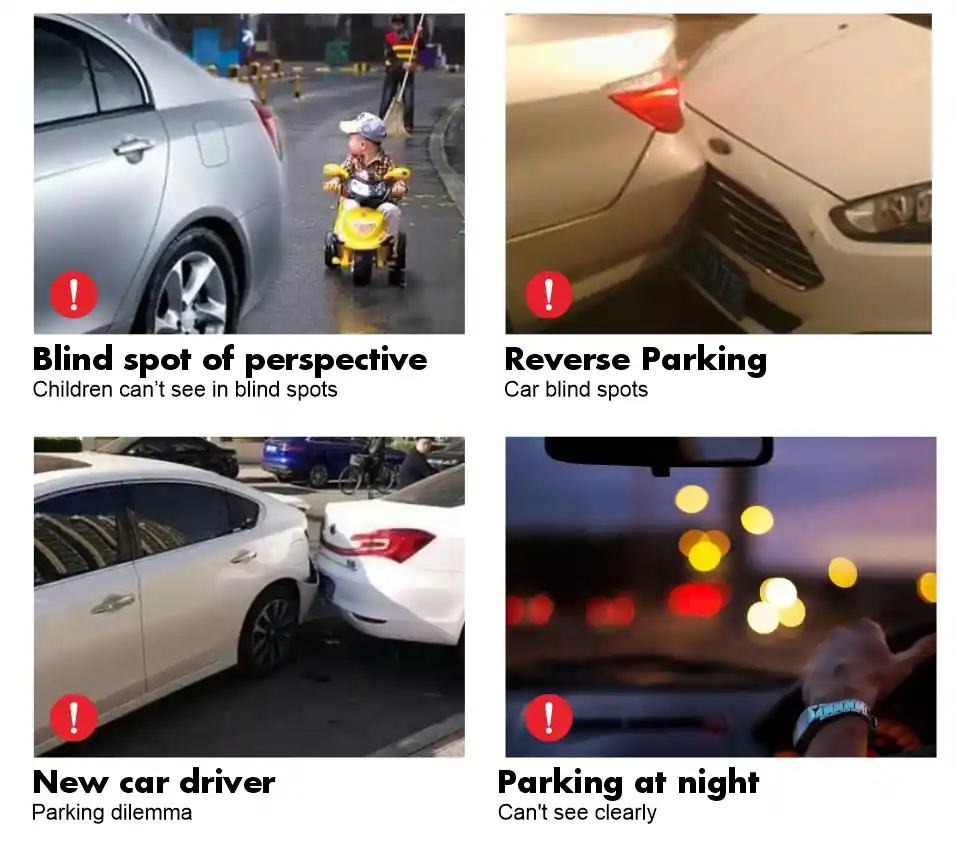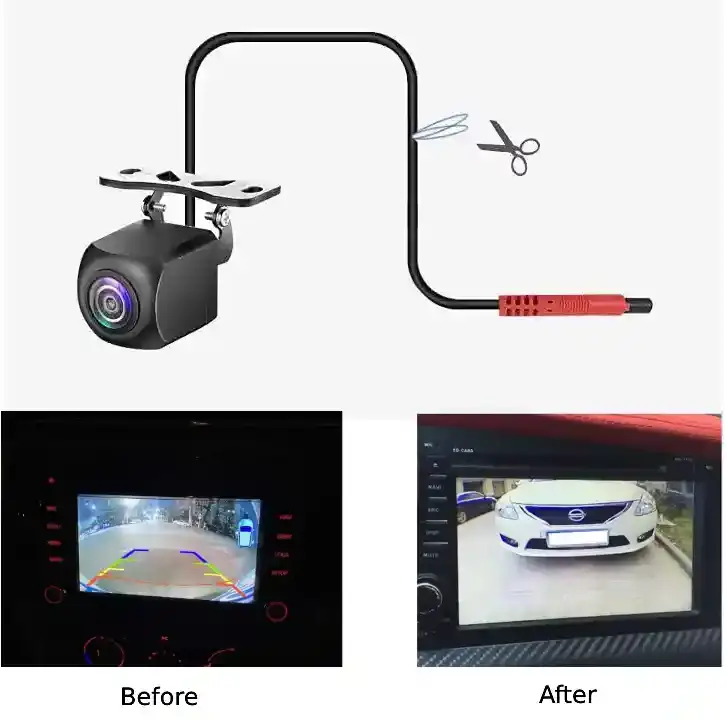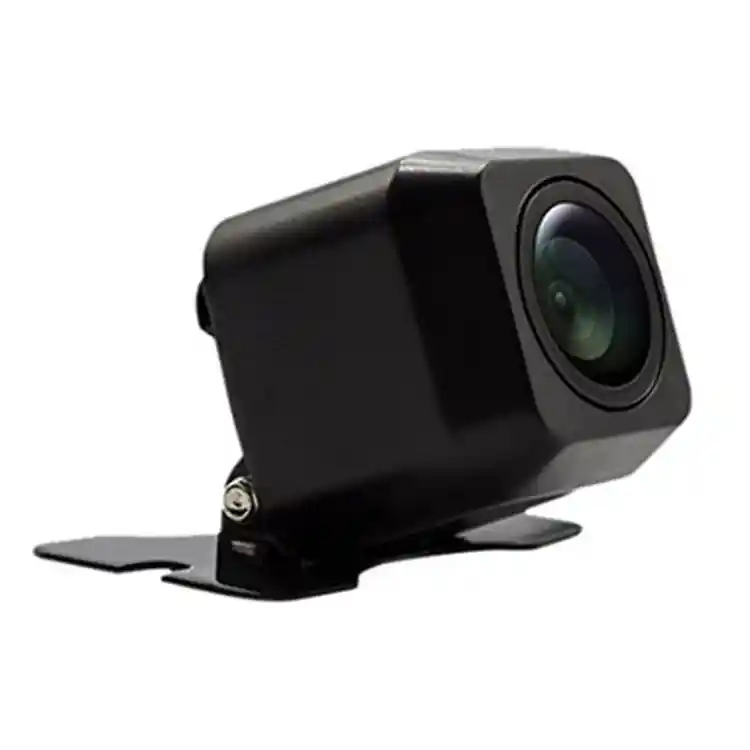In today's fast-paced world, driving can be both a necessity and a challenge. Whether you're navigating busy city streets or parking in tight spaces, having a clear view of your surroundings is essential for safe driving. This is where a rearview camera comes into play. Here are some compelling reasons why you should consider installing one in your vehicle.
Why we need to install a car rear view camera?
The main reasons why we need to install a rear view camera include:
1. Seguridad reforzada
The primary reason to install a rearview camera is safety. Traditional mirrors have blind spots that can make it difficult to see obstacles directly behind your vehicle. A rearview camera provides a clear, wide-angle view of what's behind you, helping to prevent accidents. Whether it's a pedestrian, an object, or another vehicle, you'll be able to spot potential hazards before they become a problem.

2. Aparcamiento más fácil
A rear-view camera can be a lifesaver when it comes to parking your car. With a rear view camera, you can see what's behind you without having to turn your head around. This allows you to park more easily and safely. When you're backing into a parking space, for example, you can simply look at the rear view camera to see if there are any obstacles in your way. You'll also be able to see other cars that might be approaching from behind, so you can avoid them when you're reversing out of a parking space. In short, a rearview camera can help you park more easily and safely, making it a valuable tool for any driver.

3. Protección de los usuarios vulnerables
Pedestrians, cyclists, and children are often at greater risk in parking lots or residential areas where cars are reversing. A rear view camera helps ensure that you can see these vulnerable road users, reducing the likelihood of tragic accidents. It's a small investment that can have a significant impact on safety, especially in areas where children frequently play.

4. Evitar daños costosos
Los accidentes al dar marcha atrás pueden dar lugar a reparaciones costosas, aunque los daños parezcan menores. Arañazos, abolladuras y luces rotas pueden sumar. Al instalar una cámara de visión trasera, puede evitar muchos de estos incidentes, ahorrando dinero en reparaciones y primas de seguros. Además, la cámara puede ayudarle a evitar dañar otros vehículos o propiedades, lo que también puede dar lugar a costosas reclamaciones.

5. Cumplimiento de los requisitos legales
En Canadá y Estados Unidos Las cámaras de marcha atrás están reguladas por ley desde 2018. Desde mayo de ese año, las cámaras de marcha atrás son obligatorias en todos los vehículos nuevos vendidos en Estados Unidos.
En Japón, para reducir los miles de accidentes que se producen anualmente cuando los conductores dan marcha atrás con sus vehículos, el Ministerio de Transporte exigirá a los fabricantes de automóviles que equipen sus nuevos vehículos con cámaras de visión trasera a partir de mayo de 2022.
What should consider when selecting a rear view camera for the car
Ángulo de visión: The viewing angle of cameras can range from 90 to 170 degrees horizontally. Before purchasing, it's important to confirm with the supplier the exact horizontal angle of the camera. While suppliers may assure you that there’s no problem, it's crucial to double-check whether the specified angle is horizontal or diagonal.

Ubicación de montaje de la cámara: Pay close attention to where you plan to install the camera—whether it’s on the side, back, or front of the vehicle. Since different camera types are suited for different positions, it's important to confirm the installation location before selecting the appropriate camera type.
Líneas de aparcamiento: ¿Necesarias o no? La decisión de incluir líneas de aparcamiento depende totalmente de las necesidades del cliente. A veces, los clientes no están seguros de si necesitan esta función. Para ello, ofrecemos bucles de cable que permiten alternar fácilmente entre los modos con y sin línea de aparcamiento.

Resolución: As we know, AHD cameras are becoming increasingly popular in the current market due to their high resolution, offering 1920x1080P or 1280x720P. If you’re purchasing a complete set that includes a monitor, an AHD camera might be the better option. However, if you're buying just the camera, you need to check whether your monitor is AHD or CVBS. If it’s an AHD monitor, it doesn't matter whether you choose an AHD or CVBS camera—both are compatible. But if your monitor is CVBS, you only have one option: the camera must be CVBS.

Espejo o no espejo: Al igual que con la función de línea de aparcamiento, si al comprar no está seguro de qué opción necesita, puede solicitar al proveedor que incluya bucles de cable que le permitan elegir entre los modos con espejo y sin espejo.

PAL o NTSC: La mayoría de los monitores modernos admiten los sistemas PAL y NTSC. Sin embargo, es posible que los reproductores de DVD para coche más antiguos sólo admitan uno de estos formatos. Por lo tanto, es importante comprobar qué sistema admite tu monitor antes de comprarlo.
Conectores: The camera's connector can be customized, with options such as 4-Pin, AV, BNC, BMW connectors, and more. Before choosing a type, it's important to check which connector is compatible with your monitor.

Can you put a rear view camera in any car?
Sin duda. Las cámaras de marcha atrás pueden instalarse en casi cualquier vehículo. Nuestros kits universales de cámaras de marcha atrás están diseñados para adaptarse a la mayoría de los coches, lo que garantiza un proceso de instalación rápido y sencillo.
What kind of car rear view camera is suitable for you?
To find the right car rear view camera for you, consider your vehicle type, installation preferences, and desired features. If you drive a larger vehicle, look for a camera with a wide viewing angle. Features like night vision, parking guidelines, and waterproofing can also enhance safety and convenience.
He aquí algunos tipos que me gustaría recomendar;



Conclusión
Choosing the right car rear view camera is essential for ensuring safety and convenience while driving. By understanding the different types of cameras available, considering key factors such as image quality, installation ease, and compatibility with your vehicle, you can make an informed decision that meets your specific needs. Whether you opt for a simple backup camera or a more advanced model with features like night vision and parking guidelines, investing in a high-quality reversing camera is a smart move that enhances your driving experience and provides peace of mind on the road.


